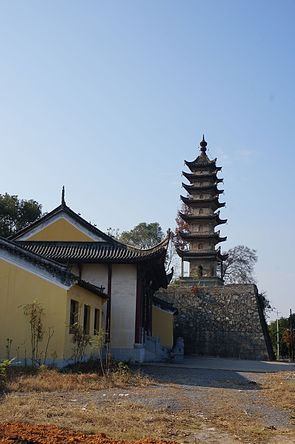
| Wuyue culture | |||||||
|---|---|---|---|---|---|---|---|
| Simplified Chinese | 吴越文化 | ||||||
| Traditional Chinese | 吳越文化 | ||||||
| |||||||


Wuyue culture (simplified Chinese: 吴越文化; traditional Chinese: 吳越文化) refers to the regional Chinese culture of the Wuyue people, a Han Chinese subgroup that has historically been the dominant demographic in the region of Jiangnan (entirety of the city of Shanghai, and the province of Zhejiang, the southern portion of Jiangsu province and the eastern portion of Anhui province). Wuyue culture is characterized as being delicate, graceful and refined, having preserved many unique cultural traditions nonextant in other regions of China.
Language
Main articles: Wu Chinese, Shanghainese, Ningbo dialect, and WenzhouneseLiterature
Main article: Wo Bau-Sae Main article: Butterfly Lovers Main article: Legend of the White Snake Main article: Dream of the Red ChamberMusic
Main article: Jiangnan sizhu Main article: Suzhou PingtanArts
Main article: Shanghai SchoolOpera styles
Main article: Kunqu Main article: Nanxi opera Main article: Yue opera Main article: Shanghai opera Main article: Shuochang Main article: WujuPhilosophy and religion
Main article: Wang Yangming Main article: TiantaiHeritage sites
Main article: Tianyi Chamber Main article: The Classical Gardens in Suzhou Main article: Geyuan GardenCultural items
Main article: Suzhou embroidery Main article: Yunjin Main article: Yixing ware Main article: Longquan celadon Main article: Yue wareCuisine
Main article: Shanghai cuisine Main article: Zhejiang cuisine Main article: Jiangsu cuisine Main article: Longjing tea Main article: Shaoxing wineOthers
Main article: Shikumen Main article: Hunping Main article: Qintong Boat FestivalSee also
- Culture of Shanghai
- Zhongyuan culture
- Culture of Jiangxi
- Hokkien culture
- Hakka culture
- Cantonese culture
- Chinese culture
References
- 董楚平. (2000). 吴越文化概述. 杭州师范学院学报: 社会科学版, (2), 10-13. (in Chinese)
| Shanghai | |||||||||||||||||||
|---|---|---|---|---|---|---|---|---|---|---|---|---|---|---|---|---|---|---|---|
| Administrative divisions |
| ||||||||||||||||||
| Culture and demographics |
| ||||||||||||||||||
| Tourist attractions |
| ||||||||||||||||||
| Places of worship |
| ||||||||||||||||||
| Skyscrapers |
| ||||||||||||||||||
| Sports venues |
| ||||||||||||||||||
| Sports teams |
| ||||||||||||||||||
| Transport |
| ||||||||||||||||||
| Universities |
| ||||||||||||||||||
| Zhejiang topics | |
|---|---|
| Hangzhou (capital) | |
| General | |
| Geography | |
| Education | |
| Culture | |
| Cuisine | |
| Visitor attractions | |
| Jiangsu topics | |
|---|---|
| Nanjing (capital) | |
| General | |
| Geography | |
| Education | |
| Culture |
|
| Visitor attractions | |
| Anhui articles | |||
|---|---|---|---|
| Capital: Hefei | |||
| Overviews | |||
| Geography | |||
| Attractions | |||
| Culture | |||
| Dialects | |||
| Education | |||
This article related to the history of China is a stub. You can help Misplaced Pages by expanding it. |
This article about Asian culture is a stub. You can help Misplaced Pages by expanding it. |